
In the mid-seventies comic production in Argentina was nearly monopolized by Editorial Columba, the only one who had not only been able to overcome the crisis that hit the media in the sixties but was able to consolidate its market position. Columba magazines (D’Artaganan, Fantasy, The Tony and Interval) were characterized by very conservative scenarios, as well as numerous texts that are often not allowed the artists to demonstrate their full capacity. However had going for it with the talent of writer Robin Wood (real name, not a pseudonym) and his great creations as «Dennis Martin», «Nippur of Lagash», «Jackaroe» and many others.

It is in these circumstances that Publisher (Editions) Record launches your line of magazines (comic books) that started in 1974 with Corto Maltese and Skorpio and continue later with Tit-Bits, Pif-Paf, Gunga Din and beyond Skorpio Plus and Phoenix. Leading the Editions Record was Alfredo Scutti, cartoonist who had worked in the late fifties in Totem magazine, published in Argentine by the Italian artist and writer Alvaro Zerboni, who at that time also edited a magazine of photo-novels.
In the early seventies and safely using their contacts with Zerboni (who had already returned to Italy) Scutti successfully publishes several magazines of Italian erotic photo-novelas (photo stories) including «Killing». Subsequently -we do not know if Zerboni society or as his representative in Argentina- Scutti start editing your comic books, which were noted for their scripts bolder about sex and violence and fundamentally better graphic quality, product pay a better price and to give more space to the artists to do their jobs. Add that the material produced for the magazines of Record Publisher has published after by Eura Editoriale in Skorpio and Lanciostory mags, although we can not say whether it was the result of an agreement between equals or Record was merely a subsidiary of Eura.
Another aspect that should be mention in the Record Editorial work is the way that highlighted the work of writer and artists through special sections, dissemination of the history of Argentina and cartoon world through columns written by writers Carlos Trillo and Guillermo Saccommano and rescue by the work of Jose Luis Salinas. To all this must be added the issue of several books, including those collected papers of the same Salinas, «Watami» Jorge Moliterni and a cartoon history of Argentina.
Done this brief review will begin with the details of individual journals Editorial Record, whose cycle closed in 1996 due mainly to the country’s economic problems and competition from imported comic books, due to the then prevailing exchange rate, a mirage according to which Argentina’s currency to the dollar equivalent, a fiction that erupted in 2001 with a formidable crisis. But now, let’s talk about comics …

SKORPIO
The first issue of the magazine Skorpio appeared in July 1974 and among its first series were counted «Corto Maltese» by Hugo Pratt, “The Cobra” by Ray Collins and Arturo del Castillo, “Black Soldier” a western drawn by Ernesto Garcia Seijas,» The sweet color of the stars” by Grassi and Lucho Olivera, «Precinct 56» a thriller of Collins and Angel Alberto Fernandez, «Henga» by Ray Collins and Juan Zanotto and «Killing», drawn by Garcia Seijas. “Killing” take its name from one of the photo-story magazines published by Scutti, character soon change its name to … «Skorpio», initially on own scripts drawn by Oswal (Osvaldo Roberto Viola) and then for a long time by Ernesto Garcia Seijas. Always at the same initial period unit drawn cartoons were published among others by Leopoldo Durañona, Victor Hugo Arias, Solano López, Lucho Olivera and Jorge Moliterni. About «Henga» say that narrated the adventures of a Neolithic hunter was actually descended from an extraterrestrial civilization, adventures where there were always beautiful women drawn by Zanotto. Skorpio material was completed with the sections «These are the creators» with reviews of the various artists who collaborated in the magazine, «Mail cartoon world» with the concerns of readers and «The Comic Strip club» with news, biographies, comments and reviews by the writers Carlos Trillo and also Guillermo Saccomanno. Closing each issue covers reproduced an engraving of the artist Frederick Remington titled «Old West».

In a second step adds to its ranks Skorpio screenwriter Hector G. Oesterheld, who creates «Loco Sexton» a journalist of the Far West that draws Arturo del Castillo, «Nekrodamus» a story set in Renaissance Europe about a demon who seeks redemption by Horacio Lalia, and in December 1976 the second part of «The Eternauta» whose original version had made Oesterheld and Solano Lopez in 1957. Other developments were «Hor, Daredevil» or “Hor, son of Henga «,» The Desert Scorpions» by Hugo Pratt, “Odysea 2000″ by Victor Hugo Arias and “Detectives’ Studio» a parody with art by Perez D’Elia. While Julio Cesar Medrano make military unit stories, especially aviation.








Subsequent to May 1977 the name of the magazine becomes Skorpio Great Color, precisely because each issue includes three color cartoons. This can be considered the beginning of the most brilliant period of the magazine, which lasted until the early eighties and included the addition of new series such as «Alvar Mayor» (Carlos Trillo and Enrique Breccia) set in the fifteenth century during the conquest of America, «The Professionals» (the historical setting is the Mexican Revolution) and scripted by Jorge Moliterni drawings, great artist who died prematurely in 1979, «Ace of Spades» (Barreiro and Juan Gimenez) about the crew of a B-17 during World War II, «The condemned» (Saccomanno-Mandrafina) reminiscent in some respects to Papillon, «I Cyborg» and “Red Planet» both of Alfredo Grassi-Lucho Olivera, “Lord Jim” by Carlos Albiac and Horacio Lalia (a disciple of Alberto Breccia specialist in horror and Victorian England), «The pilgrim of the Stars» (Trillo-Enrique Breccia), «Derek» (Saccomanno-Mandrafina), «Little king» by García Seijas and September 1978 in the No. 55 of Skorpio presentation of «Barbara», a dash of Ricardo Barreiro illustrated by Juan Zanotto. «Barbara» is possibly the most beautiful women of the comic Argentina and here had to fight an alien civilization that had enslaved humans. One attraction of the series (besides the protagonist) was that many of his adventures passed the ruins of a devastated city and practically covered with water that was none other than … Buenos Aires.
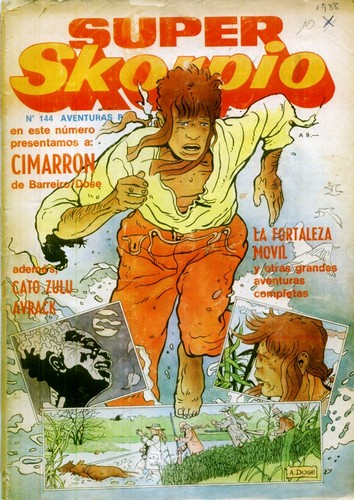
For 1982/83 we see a decline in the quality of the magazine that loses color pages and is again Skorpio to dry. There is a predominance of the unit above the comic series, although in this case may be mentioned titles like «Mandy Riley», «Riff», «Gray Traveler» (by Alberto Breccia), «Gala», «New York Year Zero» and an unfortunate third version of «The Eternauta» written by Italian Alberto Ongaro and performed by a team of designers on some initial sketches by Solano Lopez. About the end of that decade Skorpio covers begin to imitate the aesthetics imposed by Fierro, comic book appeared in 1984, high impact among young audiences. Notwithstanding this decline continues, no characters emerge as relevant and by 1991 the highlights were the work of artist Enrique Alcatena, whose boundless imagination illustrated scripts of «Crossing the labyrinth» or «Mobile fortress».





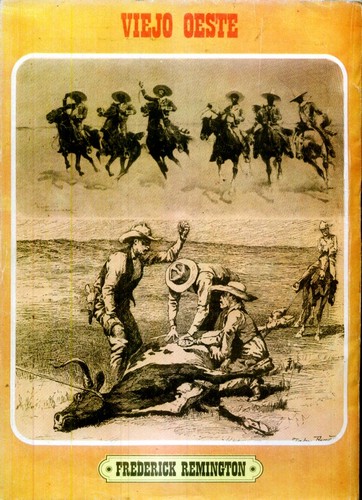

According to the website «Historieteca» Skorpio last number was 235 in January 1996. In September 1998 there was an attempted revival lasted only two numbers: 280 and 281. Novelty was published in the form of a color insert, chapters premiere of «Nippur de Lagash» classic series Editorial Columba, who by that time was also way to extinction. We close this summary of the nearly 25 years of Skorpio adding that the magazine had supplements under various titles, such as the Golden Book, Extra and Super Skorpio, which were published in some of the series already mentioned and others as «The Adventurers»,»Avrak»,»Across Oceania”, “Foreign Legion”, “Slot Barr” and “Cimarron”.
Αποκλειστικά για το Comics Trades 2012 – 2013
Carlos R. Martinez
February 2013

Αυτή η εργασία χορηγείται με άδεια Creative Commons Αναφορά Δημιουργού-Μη Εμπορική Χρήση-Όχι Παράγωγα Έργα 3.0 Μη εισαγόμενο.
39.619299
19.919585



































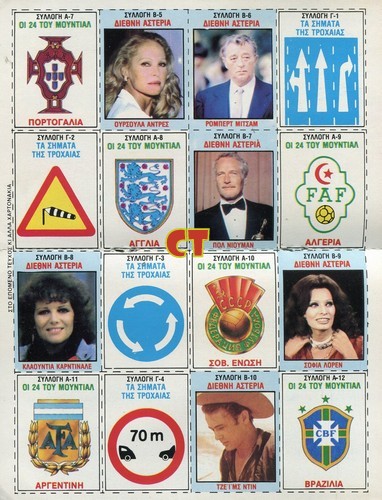
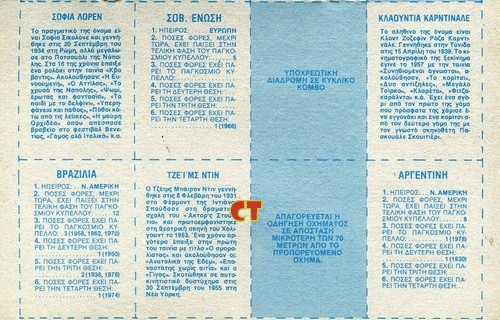
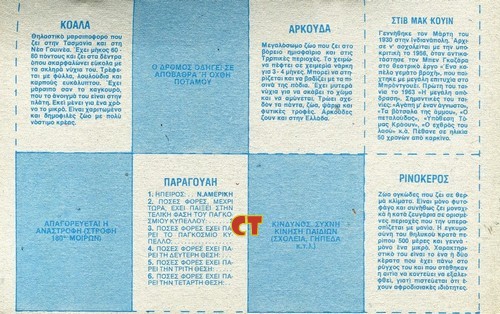







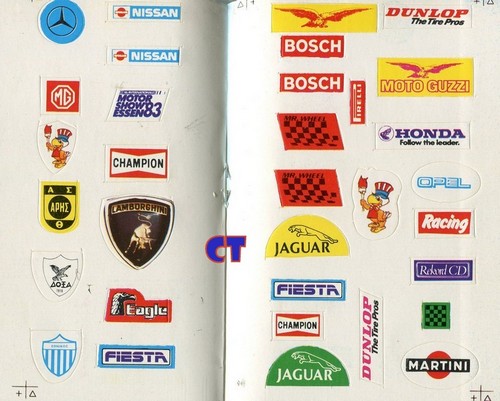



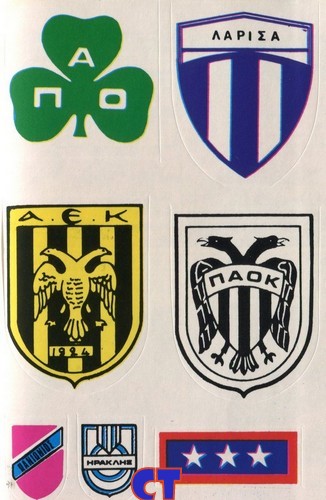














Πρέπει να έχετε συνδεθεί για να σχολιάσετε.